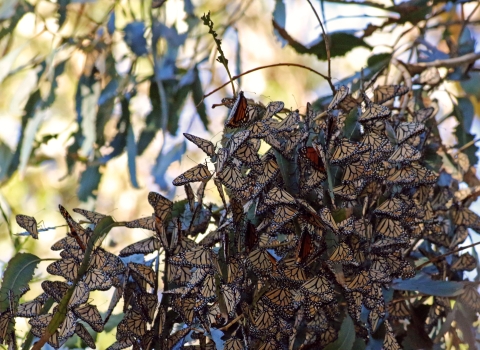There are more than 67,000 wind turbines in the United States, accounting for approximately “8.4% of total U.S. utility-scale electricity generation” (https://www.eia.gov/energyexplained/wind/electricity-generation-from-wind.php). Wind energy is a renewable source of energy and is important for helping the United States lessen dependence on fossil fuels for energy production and help the nation meet goals to curb climate change climate change
Climate change includes both global warming driven by human-induced emissions of greenhouse gases and the resulting large-scale shifts in weather patterns. Though there have been previous periods of climatic change, since the mid-20th century humans have had an unprecedented impact on Earth's climate system and caused change on a global scale.
Learn more about climate change
How does wind energy affect migratory birds?
The siting, construction, and operation of wind turbines create stressors such as habitat alteration, noise, artificial lighting, and tall structures that far exceed the height of the natural landscapes around them. These stressors create threats to migratory birds, such as degraded habitat upon which migratory birds depend, artificial lighting that can disorient migrating birds, and large wind turbines with fast-moving blades into which birds can collide. Through proper planning and use of beneficial practices, it is possible to reduce the potential for these stressors to significantly adversely impact migratory birds.
Can wind energy be good for birds?
Climate change is affecting habitats everywhere birds occur, and it is threatening or is expected to threaten the conservation of several migratory bird species. Wind energy is a renewable source of energy that can aid in reducing use of fossil fuels, which is a driver of climate change. While indirect, slowing climate change through renewable energy can have long-term beneficial impacts to migratory birds by giving habitats and species time to adapt, thus aiding in their conservation.
How do I learn more?
The U.S. Fish and Wildlife Service (Service) developed Land-Based Wind Energy Guidelines that, when followed, have the most potential to reduce adverse impacts to migratory birds. The Service stresses communication and collaboration early in the planning phases of projects is going to have the most benefit to all parties to meet the shared goals of renewable energy production and conservation.
Library Documents
- Land-Based Wind Energy Guidelines
- Guidance for Wind Energy Developments


